LA SAINTE BAUME
THE MOUNTAIN |
|
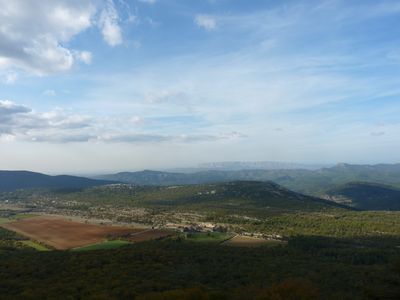 |
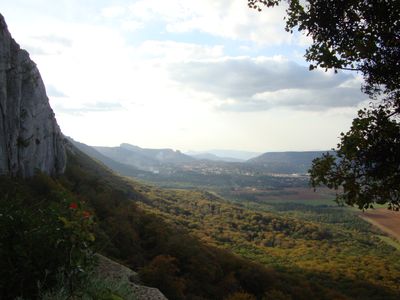 |
It's the largest and the highest mountain in Provence: 35 kilometres long and 15 kilometres large. The highest part is the yoke of the Eagle (1148 meters).
|
|
The Dragon of La Sainte Baume Long ago, a dragon who hated the beauty of La Sainte Baume landscape decided to settle down there to sow the seeds of despair and fear. With his evil power, he created storms which altered the landscape. But the dragon had a weak point, at the bottom of his breast he had the hardest heart a human being could possess. One day the "God from above", the son of the sun and a star named Venus, who had saved his energy for a long time, sent him a strike of lightning in full heart. The dragon died and all the landscape became beautiful again. But the dragon's body didn't disappear, it became La Sainte Baume mountain: his head formed the Saint Cassien height, his breast became the yoke of the Eagle which stretched all the way to the peak of the ravens and his long tail came to wind around Plan d'Aups, passing by Caïre to finish in Nans les Pins. The wound made by the lightning became the cave. |
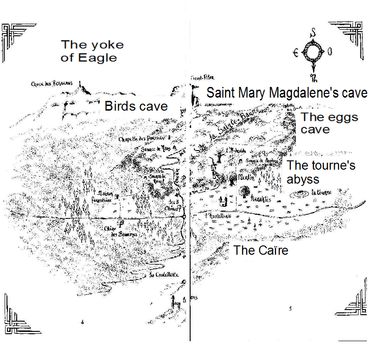 |
 |
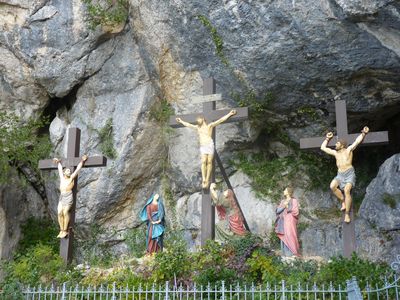 |
In Provence "baumo" means cave. This is a natural cave. It was created by erosion. Today it's a sanctuary. |
|
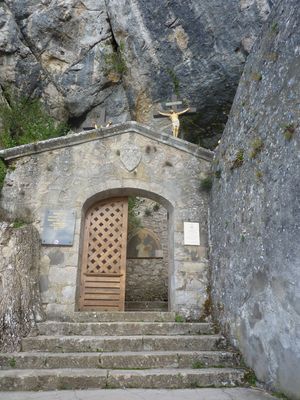 |
|
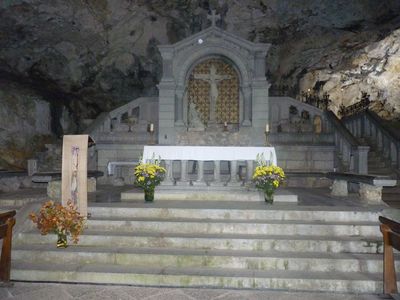 |
|
| The Legendary Master James This cave is also the final stage of Companions'Tour de France. Indeed, according to the legendary tradition of the "Companions du Devoir" (Companions of Duty), their founder, Master James was assassinated in La Sainte Baume in 950 BC on his way back from Jerusalem. Master James, a stonemason, is believed to be one of the legendary figures who constructed the First Temple (Salomon's Temple) on Mount Moriah, in Jerusalem. King Salomon of Israel had ordered the construction of the temple to house the Ark of Covenant, the biblical vessel containing the Tables of Stone on which the Ten Commandments were inscribed. The "Tour de France" is an initiatory journey which leads to the mastery of a craftsmanship and La Sainte Baume is the place that unites the Companions. The pilgrimage begins with the ascent to the cave. Once in the cave, the companion receives the colours that is to say the sash stamped with the Companions'tools (the compass and the square). Mary Magdalene is the patron Saint of Companions. |
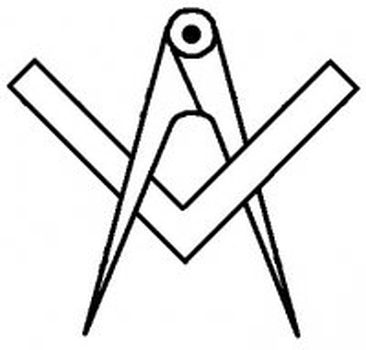 |
Mary Magdalene According to the Provencal tradition Saint Mary Magdalene (also known as Mary Magdala) retired to the cave and spent the last 30 years of her life there, praying, after evangelizing the "Sainte Marie de la Mer" area. According to the Bible, in the New Testament Saint Mary Magdalene was freed from seven devils by Jesus Christ. These devils were actually the expression of her neurosis. She became one of Christ's most fervent followers, until his death. She was the first witness of the Resurrection of Jesus. |
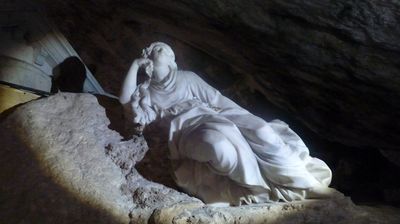 |
La Sainte Baume was the last stage of Jesus'love for Mary Magdalene. The Provencal legend says that she crossed the Mediterranean sea on a boat without sails nor oars, accompanied by Lazarus (her brother), Martha (her sister), Maximinus, Mary Jacobea (the saint Virgin's sister), Mary Salome (the mother of the apostles James and John) and their handmaid Sarah. When the boat landed in Camargue, Mary Salome, Mary Jacobea and Sarah stayed there to become the famous "Saintes Maries de la mer", hence the name of the famous village. |
|
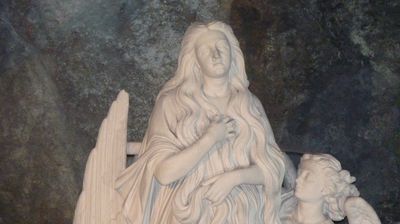 |
The others went their own way. Mary Magdalene went along the coast eastward. When she arrived at the bottom of a mountain, she climbed it to find a shelter to continue to expiate her sins. A star guided her to the cave. She lived there for the last thirty years of her life, dressed only with her long hair, feeding only on roots and drinking only the water from the sky. |
Every day, angels visited her. They lifted her to the top of the mountain. There she could only hear the divine concerts and she was enraptured.
According to some, when the time of her death came, angels carried Mary Magdalene to Aix into the oratory of Saint Maximinus where she received the viaticum. Then her body was laid in an oratory constructed by Saint Maximinus at Villa Lata, afterward called Saint Maximin (a small town 25 kilometres away from the cave). It is said that her head now lies in the grotto which has become the centre of many pilgrimages.
|
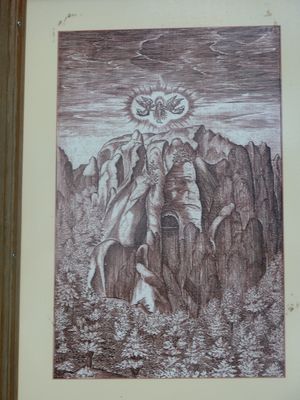 |
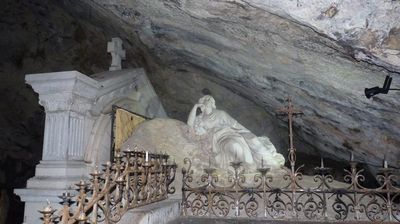 |
The pilgrims who came to the cave to honour the Saint got into the habit of taking a piece of stone where she was lying. They believed that they were feathers of Mary Magdalene's quilt. |
Gipsy sacred songs in Provence, recorded in the Cave during our visit for the TV Programme Vaqui on France 3 |
|
There's another legend linked with Mary Magdalene, and more particularly with the boat on which she crossed the Mediterranean, a legend which gave birth to a typically Provencal biscuit.
|
|
The Legend: The origin of these biscuits is associated with the holiday of Candlemas celebrated in the Abbey of Saint Victor in Marseille. |
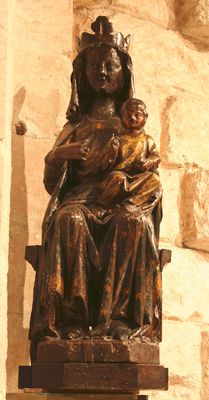 |
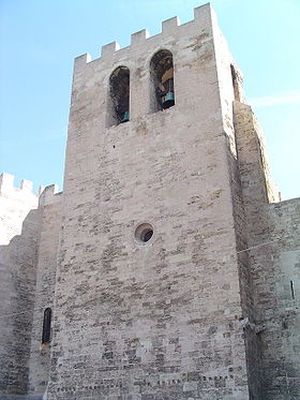 |
|
Towards the end of the thirteenth century a statue of a Virgin Mary was washed up in the Lacydon that is to say the old Port of Marseille. It was made of polychrome wood, Its green dress was dirty. It was wearing a gold crown. It was enough for the craftsmen of Marseille to see it as a mark of fate and sign of protection. According to some, it was our Lady of the New Fire, according to others, the Lady Protector of Seafarers. |
|
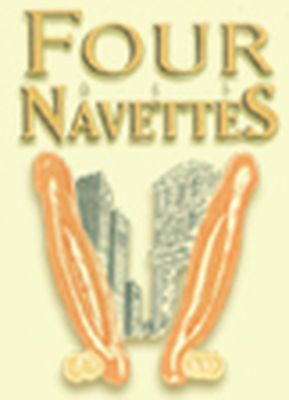 |
In 1781, Mr. Aveyrous, the founder of the "Four des navettes", (literally "the Shuttle Oven") had the idea to make biscuits for the numerous pilgrims who would come to St Victor Abbey, on an empty stomach, just across the street from his bakery, to honour this statue of the Virgin Mary. He shaped his delicious biscuits to commemorate the boat of the Saint Maries. Indeed the legend has it that Mary Magdalene, Mary Salome, Mary Jacobea and Mary Sarah arrived in Lacydon on a boat after a long journey. |
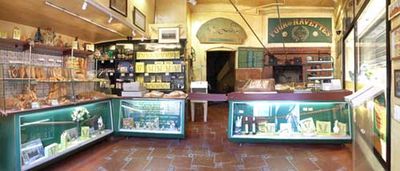 |
|
According to the Provencal tradition one should keep a lucky-charm at home. It consists of a green candle (symbolizing the abbey of Saint Victor) and a holy "navette". |
|
The Recipe: To make "navettes" you need flour, sugar, eggs, butter and orange blossom or other flavours or spices. Real "navettes" are made with orange blossom. |
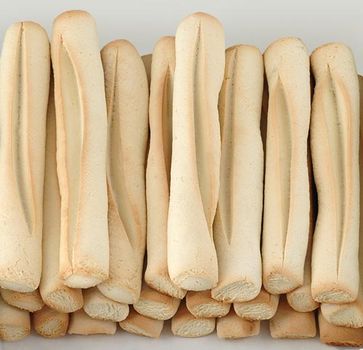 |